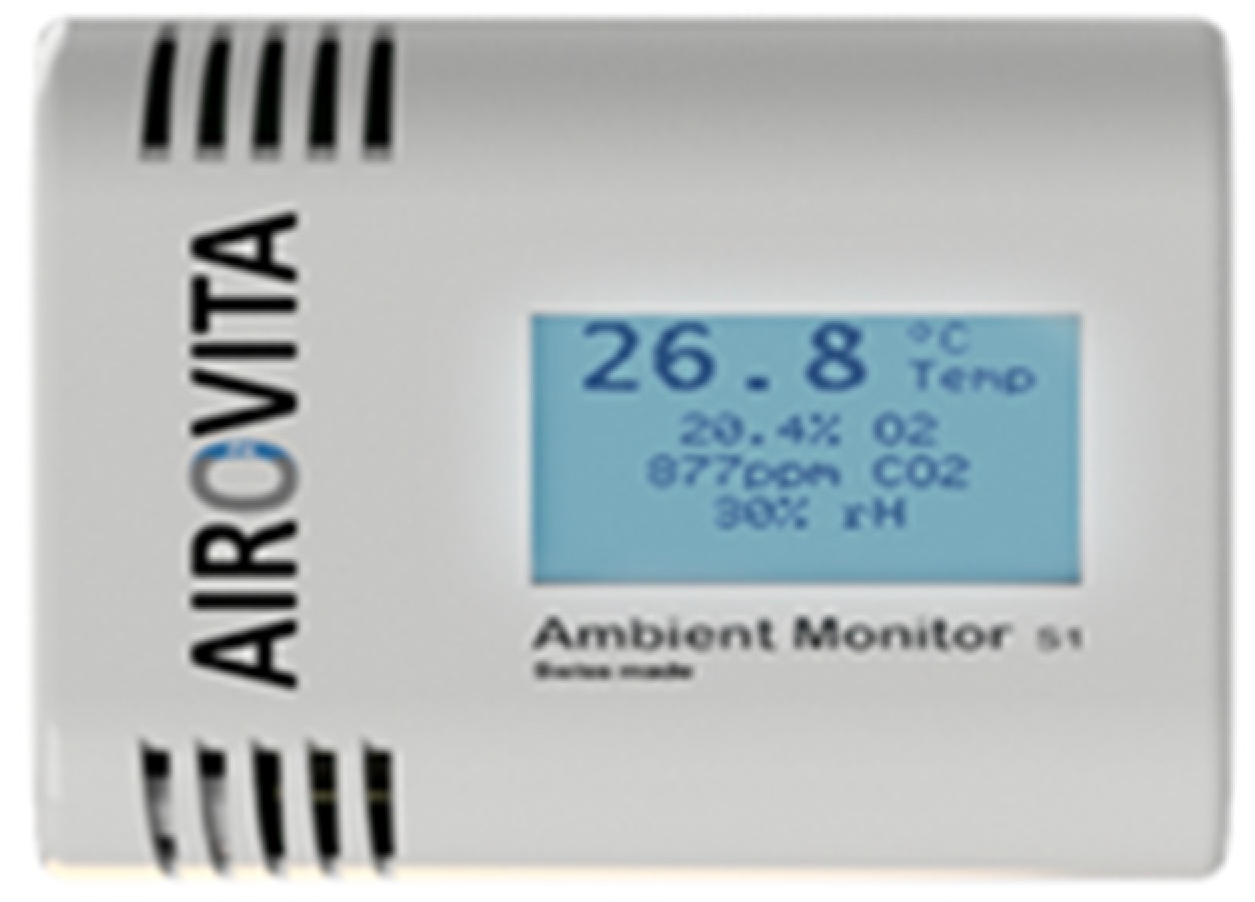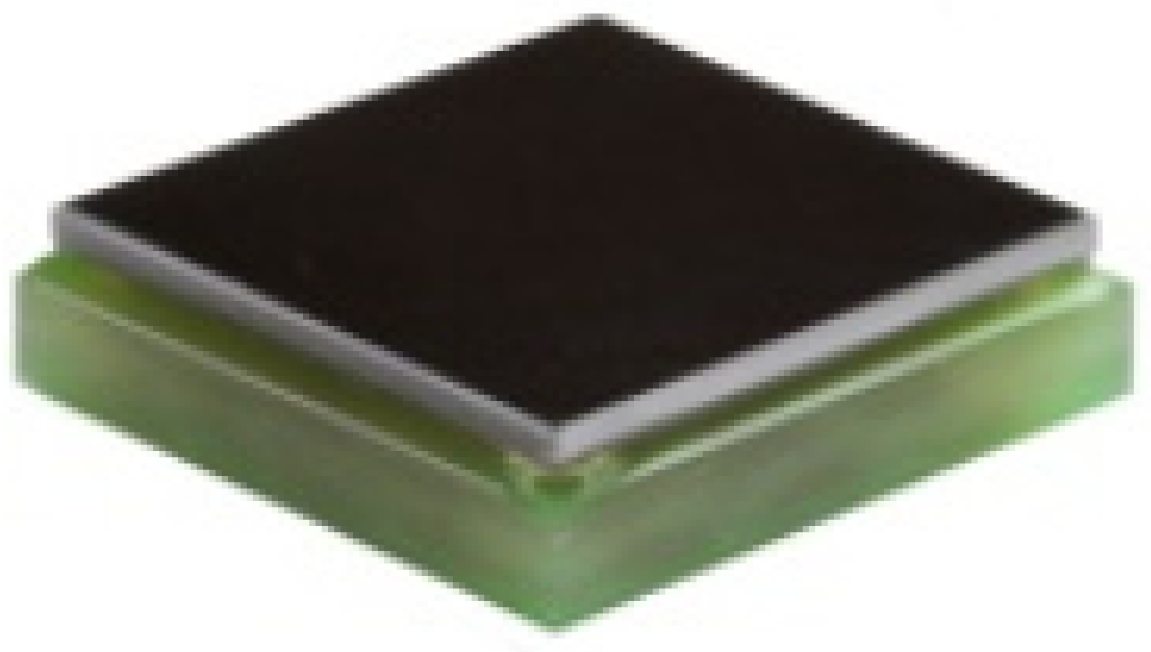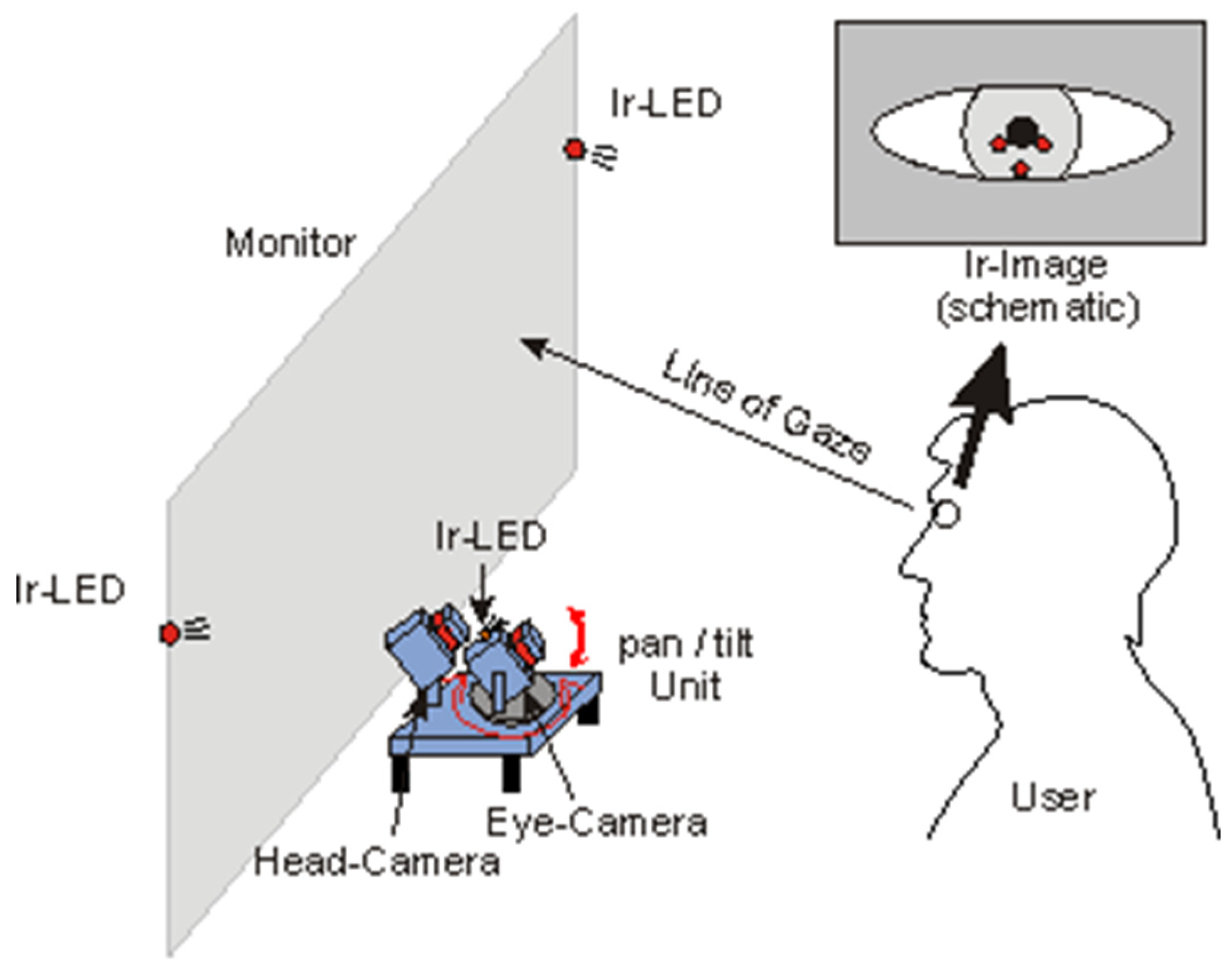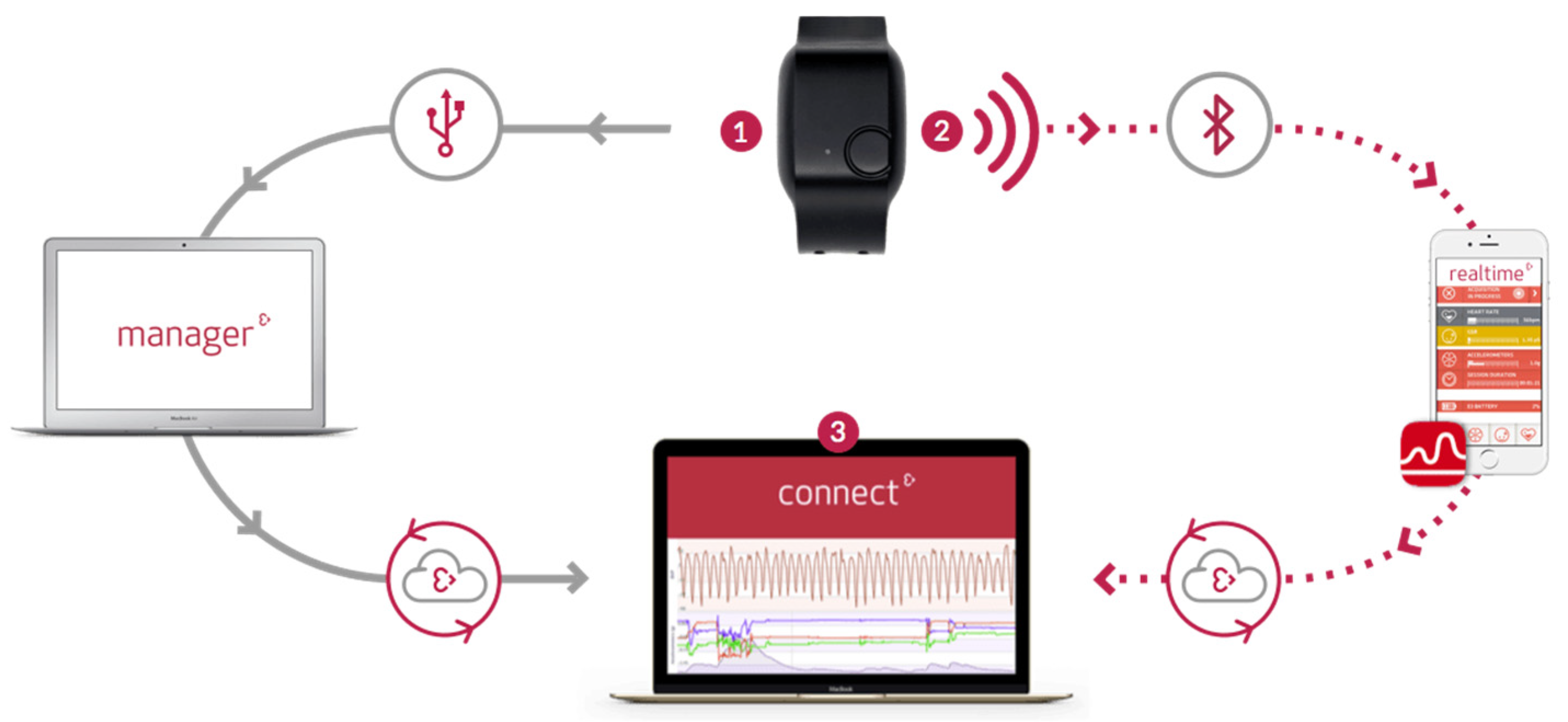Impact of Multi-Sensor Technology for Enhancing Global Security in Closed Environments Using Cloud-Based Resources
Abstract
:1. Introduction
2. Multi-Sensor Technology and Effects on Closed Workplaces
2.1. High Level Requirements for Multi-Sensor Technologies
- Sensitivity: The concept of sensitivity refers to the minimum input of physical parameters that produce a detectable output change. More precisely, it can be defined as either the input parameter variation needed to generate a standardized output variation or an output voltage variation for a given variation in an input parameter.
- Resolution: This defines the lowest detectable incremental variation of an input parameter that can be found in the output signal.
- Precision: The precision aspect of sensor technology is related to the degree of reproducibility of a measurement. Ideally, the sensor should produce, for a given scenario, the same value every time. Small variations can be detected in the majority of sensors relative to the correct value.
- Accuracy: This focuses on the difference between the concrete value of the physical quantity and the measured quantity. Accuracy can be defined by a percentage or in absolute terms.
- Range: This indicator specifies the maximum and minimum values that could be captured by the sensor. This range should encompass the minimum and maximum bounds encountered.
- Response time: This can be defined as the time in which the output reaches a certain percentage (e.g., 95%) of its final value in response to a step variation of the input. It depends on the sensor nature and should be short enough, compared to the physical aspect, to capture.
- Sampling frequency: Some sensors have continuous output during certain time intervals. Technically speaking, a periodic measurement is performed according to the sensor sampling rate. This sampling frequency has to be greater than double the maximum frequency (Shannon theorem) that may be captured. This ensures that the coincidence between the sensor output curve and the actual physical parameters are measured.
- Tolerated physical environment quantities: Some sensors may face extreme weather conditions and it is important that the sensor work properly. These physical conditions can be related to temperature, sunlight, wind, smoke, audio noise, electromagnetic rays, humidity, dust, and so on.
- Lifetime and maintainability: It is important to estimate the lifetime of the sensor before its adoption in order to adequately plan all the logistics related to installation and maintenance.
- Communication medium: In the cases where sensors are integrated in an all-encompassing system, it is necessary to be precise in regards to the communication medium adopted by the sensor. This is particularly useful for multi-sensor fusion as well as multi-sensor fusion.
- Interoperability: In a multi-sensor context, interoperability is highly recommended. This allows the integration of sensors with hybrid communication protocols.
2.2. Environmental Sensors
2.2.1. Air Sensors
2.2.2. Ionizing Radiation Sensor
2.2.3. Sound/Noise Level Sensors
2.3. Indirect-Contact Sensors
2.3.1. Eye Motion Sensor
2.3.2. Heartbeat Sensor
2.3.3. Body Temperature Sensor
- Electromagnetic spectrum = [0.75 μm, 1000 μm]
- Near IR if λ [0.75 μm, 3 μm]
- Mid-IR if λ [3 μm, 6 μm]
- Far-IR if λ > 6 μm
2.4. Direct-Contact Sensors
2.4.1. Human-Motion Sensors
2.4.2. Smart-Health Sensors
2.4.3. Fingerprint Sensors
3. Efficient Solution in Cloud-Based Resources
3.1. Mapping Requirements with Adopted Multi-Sensor Approach
3.2. Analysis and Combined Results in Cloud-Based Resources
- The proposed system based on multi-sensor technology offers the possibility to calibrate inaccurate sensors. This can ensure good correlation between various groups of sensors. For instance, a sweat sensor detecting human temperature by direct contact can be more accurate than an IR temperature sensor and, then, the obtained data can be precisely calibrated in a suitable manner.
- Obviously, it is highly recommended to take into consideration the health status of workers in closed areas. Such environments can disturb, at astounding rate, the health of individuals. Combining both environmental and human-body sensors reduces this issue by informing the supervisor of all pertinent data, which could prevent many catastrophic scenarios.
- The performance of workers can be improved when their physiological data in different circumstances are known. Many further studies can be performed on the correlation between physiological and environmental data associated with the productivity of employees.
- The results obtained from the combined sensors present a positive effect on global security. Once all workers know they are tracked by a multitude of sensors, it will influence their behaviors and performance to fit with their job requirements. Besides, any misbehavior will be captured by supervisors and will trigger an adequate reaction. Additionally, any abnormal results captured by the multiple sensors will be discovered immediately by supervisors who are then able to react appropriately.
- The described approach is considered flexible, interoperable, and able to tolerate many configuration points. This means that this solution could be applied to a variety of systems having their own specifications and details. The adoption of cloud-based resources makes the data availability independent of any specific platform or architecture.
- To realize a failsafe connection with minimum effort, transportation of the semantic context of the collated data to the cloud, such as data type, identifier, and the location in the object model, is guaranteed by the actual communication architecture.
- This approach is presented as a high level framework. However, the concept of the solution is open to various types of communication medium, database structures, etc. For instance, communication could be implemented with, but not limited to, soap web services. The data format could be a hierarchical data format (HDF), network common data format (netCDF), or any other proprietary format [52].
- Many statistical studies can be performed based on the raw sensor data. It is possible to use the cloud data center to deploy statistic modules.
4. Conclusions
Author Contributions
Funding
Conflicts of Interest
References
- Lin, Y.; Li, W.; Ghandehari, M.; Fortino, G. People-centric cognitive internet of things for the quantitative analysis of environmental exposure. IEEE Internet Things J. 2018, 5, 2353–2366. [Google Scholar]
- Dong, J.; Zhuang, D.; Huang, Y.; Fu, J. Advances in Multi-Sensor Data Fusion: Algorithms and Applications. Sensors 2009, 9, 7771–7784. [Google Scholar] [CrossRef] [PubMed] [Green Version]
- De Farias, C.M.; Pirmez, L.; Fortino, G.; Guerrieri, A. A multi-sensor data fusion technique using data correlations among multiple applications. Future Gener. Comput. Syst. 2019, 92, 109–118. [Google Scholar] [CrossRef]
- Llinas, J.; Hall, D.L.; Liggins, M.E. (Eds.) Handbook of Multisensor Data Fusion: Theory and Practice; CRC Press: Boca Raton, FL, USA, 2009; pp. 17–35. [Google Scholar]
- Fortino, G.; Ghasemzadeh, H.; Gravina, R.; Liu, P.X.; Poon, C.C.; Wang, Z. Advances in Multi-Sensor Fusion for Body Sensor Networks: Algorithms, Architectures, and Applications. Guest Editorial. Inf. Fusion 2019, 45, 150–152. [Google Scholar] [CrossRef]
- Farias, C.; Pirmez, L.; Delicato, F.; Carmo, L.; Li, W.; Zomaya, A.Y.; de Souza, J.N. Multisensor data fusion in shared sensor and actuator networks. In Proceedings of the IEEE 2014 17th International Conference on Information Fusion (FUSION), Salamanca, Spain, 7–10 July 2014; pp. 1–8. [Google Scholar]
- Ali, A.R. Dielectric Micro-Resonator-Based Opto-Mechanical Systems for Sensing Applications. Ph.D. Thesis, Southern Methodist University, Dallas, TX, USA, 2015. [Google Scholar]
- Suhas, P.; Harshal, M.; Rakhi, M.; Shubhada, P.; Pavan, K. Smart Health Monitoring System using Sensors. Int. J. Recent Innov. Trends Comput. Commun. 2017, 5, 54–56. [Google Scholar]
- Baig, M.M.; Gholamhosseini, H. Smart health monitoring systems: An overview of design and modeling. J. Med. Syst. 2013, 37, 9898. [Google Scholar] [CrossRef] [PubMed]
- Zamanian, A.; Hardiman, C. Electromagnetic radiation and human health: A review of sources and effects. High Freq. Electron. 2005, 4, 16–26. [Google Scholar]
- Altowaijri, S.; Ayari, M.; El Touati, Y. On the Use of Multi-Sensor Technology for Improving Soldiers’ Safety and Saudi-Border-Security. In Proceedings of the 1st International Symposium on Land and Maritime Border Security and Safety Challenges and Solutions, Jeddah, Saudi Arabia, 15–19 October 2017. [Google Scholar]
- Byrne, C.; Lim, C.L. The ingestible telemetric body core temperature sensor: A review of validity and exercise applications. Br. J. Sports Med. 2007, 41, 126–133. [Google Scholar] [CrossRef]
- Hammoudeh, M.; Arioua, M. Sensors and Actuators in Smart Cities. J. Sens. Actuator Netw. 2018, 7, 8. [Google Scholar] [CrossRef]
- Xu, B.; Chakraborty, H.; Remsing, R.C.; Klein, M.L.; Ren, S. A Free-Standing Molecular Spin-Charge Converter for Ubiquitous Magnetic-Energy Harvesting and Sensing. Adv. Mater. 2017, 29, 1605150. [Google Scholar] [CrossRef]
- Hubbell, B.J.; Kaufman, A.; Rivers, L.; Schulte, K.; Hagler, G.; Clougherty, J.; Cascio, W.; Costa, D. Understanding social and behavioral drivers and impacts of air quality sensor use. Sci. Total Environ. 2018, 621, 886–894. [Google Scholar] [CrossRef] [PubMed]
- Amy, T.; Jones, B.; Thornburg, J. Sleep Banking: Improving Fighter Management. Milit. Rev. 2017, 97, 91. [Google Scholar]
- Kurhe, P.S.; Agrawal, S.S. Real Time Tracking and Health Monitoring System of Remote Soldier Using ARM 7. Int. J. Eng. Trends Technol. 2013, 4, 311–315. [Google Scholar]
- Vlado, S.; Salado, G.F.; Suciu, G.; Ulisses, A.; de Laat, C. Developing, Provisioning and Controlling Time Critical Applications in Cloud. In Proceedings of the Advances in Service-Oriented and Cloud Computing, Workshops of ESOCC 2017, Oslo, Norway, 27–29 September 2017; Revised Selected Papers. Springer: Berlin, Germany, 2018; p. 169. [Google Scholar]
- Chong, C.Y.; Kumar, S.P. Sensor networks: Evolution, opportunities, and challenges. Proc. IEEE 2003, 91, 1247–1256. [Google Scholar] [CrossRef] [Green Version]
- Gravina, R.; Alinia, P.; Ghasemzadeh, H.; Fortino, G. Multi-sensor fusion in body sensor networks: State-of-the-art and research challenges. Inf. Fusion 2017, 35, 68–80. [Google Scholar] [CrossRef]
- Du, S.; Bhattacharya, C.B.; Sen, S. Corporate social responsibility, multi-faceted job-products, and employee outcomes. J. Bus. Ethics 2015, 131, 319–335. [Google Scholar] [CrossRef]
- National Instruments. Sensor Terminology. Available online: http://www.ni.com/white-paper/14860/en/ (accessed on 15 November 2018).
- Zhang, Z.; Tong, J.; Chen, D.H.; Lan, Y.B. Electronic nose with an air sensor matrix for detecting beef freshness. J. Bionic Eng. 2008, 5, 67–73. [Google Scholar] [CrossRef]
- Mansour, S.; Nasser, N.; Karim, L.; Ali, A. Wireless sensor network-based air quality monitoring system. In Proceedings of the IEEE 2014 International Conference on Computing, Networking and Communications (ICNC), Honolulu, HI, USA, 3–6 February 2014; pp. 545–550. [Google Scholar]
- Khedo, K.K.; Perseedoss, R.; Mungur, A. A wireless sensor network air pollution monitoring system. arXiv, 2010; arXiv:1005.1737. [Google Scholar]
- Hagan, D.H.; Isaacman-VanWertz, G.; Franklin, J.P.; Wallace, L.M.; Kocar, B.D.; Heald, C.L.; Kroll, J.H. Calibration and Assessment of Electrochemical Air Quality Sensors by Co-Location with Regulatory-Grade Instruments. Atmos. Meas. Tech. 2018, 11, 315–328. [Google Scholar] [CrossRef]
- Meng, L.-J. Ionizing Radiation Sensor. U.S. Patent 8,017,917, 13 September 2011. [Google Scholar]
- Elin, V.A.; Merkin, M.M. Ionizing Radiation Sensor. U.S. Patent 9,547,089, 17 January 2017. [Google Scholar]
- Bree, H.E.; Druyvesteyn, W.F. A particle velocity sensor to measure the sound from a structure in the presence of background noise. In Proceedings of the Forum Acousticum Budapest: 4th European Congress on Acustics, Budapest, Hungary, 29 August–2 September 2005. [Google Scholar]
- Rajagukguk, J.; Sari, N.E. Detection System of Sound Noise Level (SNL) Based on Condenser Microphone Sensor. J. Phys. Conf. Ser. 2018, 970, 012025. [Google Scholar] [CrossRef] [Green Version]
- Magar, R.; Pawar, K.; Derle, P.; Sangle, V. Eye Movement Detection Algorithm for Wheelchair. Int. J. Sci. Res. Educ. 2016, 4, 12. [Google Scholar]
- Maiti, M.; Banerjee, T.; Chatterjee, K. An innovative prototype to prevent accidents using eye blink sensors and accelerometer ADXL330. In Proceedings of the 2015 International Conference and Workshop on Computing and Communication (IEMCON), Vancouver, BC, Canada, 15–17 October 2015; pp. 1–6. [Google Scholar]
- Bao, H.; Fang, W.; Guo, B.; Wang, P. Real-Time Eye-Interaction System Developed with Eye Tracking Glasses and Motion Capture. In International Conference on Applied Human Factors and Ergonomics; Springer: Cham, Switzerland, 2017. [Google Scholar]
- Nahlaoui, M.Y.A. Eye-Tracking–Visuelle Blickrichtungserfassung im Dreidimensionalen Raumtm. TM-Tech. Mess. 2018, 75, 437–444. [Google Scholar]
- Mannan, M.M.N.; Kim, S.; Jeong, M.Y.; Kamran, M.A. Hybrid EEG—Eye tracker: Automatic identification and removal of eye movement and blink artifacts from electroencephalographic signal. Sensors 2016, 16, 241. [Google Scholar] [CrossRef] [PubMed]
- Kevin, S.R.; Antoaroo, M.A.; Beeharry, A. Eye tracking system for enhanced learning experiences. Educ. Inf. Technol. 2016, 21, 1785–1806. [Google Scholar]
- Spectral Response. Available online: https://www.stemmer-imaging.com/en/knowledge-base/spectral-response (accessed on 17 November 2018).
- Kittali, R.M.; Sutagundar, A. Automation of Waste Segregation System Using PLC. Int. J. Eng. Technol. ICRIET 2016, 7, 265–268. [Google Scholar]
- Müller, B.; Ilg, W.; Giese, M.A.; Ludolph, N. Validation of enhanced kinect sensor based motion capturing for gait assessment. PLoS ONE 2017, 12, e0175813. [Google Scholar] [CrossRef] [PubMed]
- Huang, M.; Tamura, T.; Tang, Z.; Chen, W.; Kanaya, S. A Wearable Thermometry for Core Body Temperature Measurement and Its Experimental Verification. IEEE J. Biomed. Health Inform. 2017, 3, 708–714. [Google Scholar] [CrossRef] [PubMed]
- Vaz, A.; Ubarretxena, A.; Zalbide, I.; Pardo, D.; Solar, H.; Garcia-Alonso, A.; Berenguer, R. Full passive UHF tag with a temperature sensor suitable for human body temperature monitoring. IEEE Trans. Circuits Syst. II Express Briefs 2010, 57, 95–99. [Google Scholar] [CrossRef]
- Su, B.; Tang, Q.; Wang, G.; Sheng, M. The recognition of human daily actions with wearable motion sensor system. In Transactions on Edutainment XII; Springer: Berlin/Heidelberg, Germany, 2016; pp. 68–77. [Google Scholar]
- Ebert, A.; Kiermeier, M.; Marouane, C.; Linnhoff-Popien, C. Sensx: About sensing and assessment of complex human motion. arXiv 2017, arXiv:1703.02847. [Google Scholar]
- Trung, T.Q.; Ramasundaram, S.; Hwang, B.-U.; Lee, N.-E. An All-Elastomeric Transparent and Stretchable Temperature Sensor for Body-Attachable Wearable Electronics. Adv. Mater. 2016, 28, 502–509. [Google Scholar] [CrossRef]
- Kavita, J.; Sobhanayak, S.; Turuk, A.K.; Bibhudatta, S.L.; Mohanta, B.K.; Jena, D. An IoT-Cloud based smart healthcare monitoring system using container based virtual environment in Edge device. In Proceedings of the 2018 International Conference on Emerging Trends and Innovations in Engineering and Technological Research (ICETIETR), Ernakulam, India, 11–13 July 2018; pp. 1–7. [Google Scholar]
- Virone, G.; Wood, A.; Selavo, L.; Cao, Q.; Fang, L.; Doan, T.; He, Z.; Stoleru, R.; Lin, S.; Stankovic, J. An advanced wireless sensor network for health monitoring. In Proceedings of the Transdisciplinary Conference on Distributed Diagnosis and Home Healthcare (D2H2), Arlington, TX, USA, 2–4 April 2006; pp. 2–4. [Google Scholar]
- Longhi, S.; Monteri, A.; Freddi, A. Human Monitoring, Smart Health and Assisted Living: Techniques and Technologies; Institution of Engineering and Technology: London, UK, 2017. [Google Scholar]
- Yousefpor, M.; Bussat, J.M.; Lyon, B.B.; Gozzini, G.; Hotelling, S.P.; Setlak, D. Fingerprint Sensor in an Electronic Device. U.S. Patent 9,984,270, 29 May 2018. [Google Scholar]
- Goodelle, J.; Wickboldt, P.; Lee, Y.S.; Lam, C.; Mackey, B.L. Optical Fingerprint Sensor Package. U.S. Patent Application No. 15/269,901, 23 May 2017. [Google Scholar]
- Bernstein, R.W.; Christie, N.W.; Bredholt, G.I.; Sløgedal, Ø. Integrated Finger Print Sensor. U.S. Patent 9,881,196, 30 January 2018. [Google Scholar]
- Benkley, F.G., III. Fingerprint Sensor Employing an Integrated Noise Rejection Structure. U.S. Patent Application No. 15/722,488, 15 February 2018. [Google Scholar]
- Rübel, O.; Dougherty, M.; Denes, P.; Conant, D.; Chang, E.F.; Bouchard, K. Methods for Specifying Scientific Data Standards and Modeling Relationships with Applications to Neuroscience. Front. Neuroinform. 2016, 4, 48. [Google Scholar] [CrossRef]
- Zhang, Q.; Liu, Y.; Blum, R.S.; Han, J.; Tao, D. Sparse representation based multi-sensor image fusion for multi-focus and multi-modality images: A review. Inform. Fusion 2018, 40, 57–75. [Google Scholar] [CrossRef]
- Kavitha, S.; Thyagharajan, K.K. Efficient DWT-based fusion techniques using genetic algorithm for optimal parameter estimation. Soft Comput. 2017, 21, 3307–3316. [Google Scholar] [CrossRef]
- Zsifkovits, M.; Moll, M.; Pham, T.S.; Pickl, S.W. A visual approach to data fusion in sensor networks. In Proceedings of the International Conference on Security and Management, Las Vegas, NV, USA, 17–20 July 2017; pp. 3–6. [Google Scholar]













| Sensors Requirements | Environmental Sensors | |||||
|---|---|---|---|---|---|---|
| Air Sensor | Ionizing Radiation Sensor | Sound/Noise Level Sensor | ||||
| CO2 | Oxygen | Temperature | Air Humidity | |||
| Sensitivity | 2% | 2% | 1 °C | 2.5% | 0.8–20 CPS/nv | 48–66 dB |
| Precision | 2% | 2% | 1 °C | 2.5% | 1% | 10 dB |
| Resolution | 1% | 1% | 0.5 °C | 2.5% | 1% | 10 dB |
| Accuracy | 1% | 1% | 0.5 °C | ±2.5% from 10–90% RH | 1% | 10 dB |
| Range | 0–10,000 ppm | 0–10,000 ppm | –20 °C–60 °C | 0–100% RH –40°–70 °C | 0–2 msv/h | 50 Hz–20 KHz |
| Response time | 20 s | 20 s | 10 s | 5 min | 1 s | 1 s |
| Sampling frequency | 5 10−2 Hz | 5 10−2 Hz | 0.1 Hz | 3 10−3 Hz | 1 Hz | 1 Hz |
| Tolerated physical environment quantities | 0–10,000 ppm | 0–10,000 ppm | –40 °C–90 °C | 0–100% RH –40°–70 °C | 0–200 msv/h | Impedance: 50 Hz–20 KHz operating temperature 40 °C–85 °C |
| Lifetime and maintainability | 1 year | 1 year | 1 year | 1 year | 1 year | 1 year |
| Communication medium | Visual; Ethernet; Wi-Fi | Visual; Ethernet; Wi-Fi | Visual; Ethernet; Wi-Fi | Visual; Ethernet; Wi-Fi | Visual; Ethernet; Wi-Fi | Visual; Ethernet; Wi-Fi |
| Interoperability | important | important | important | important | important | important |
| Sensors Requirements | Indirect-Contact Sensors | ||
|---|---|---|---|
| Eye Motion Sensor | Heartbeat Sensor | Body Temperature Sensor | |
| Sensitivity | 71% and 88% for detecting ≥3 lapses (PVT) in a minute and 100% and 86% for ≥5 lapses | 3 BPM | 0.2 °C |
| Precision | 3 BPM | 0.2 °C | |
| Resolution | 3 BPM | 0.2 °C | |
| Accuracy | 3 BPM | 0.2 °C | |
| Range | 360 degree detection, covering up to 7 m from unit | 0–200 BPM | 20 °C–50 °C |
| Response time | 0.5 s | 5 s | 2 s |
| Sampling frequency | 2 Hz | 0.2 Hz | 0.5 Hz |
| Tolerated physical environment quantities | Work in low lightening | 0–200 BPM | 10 °C–60 °C |
| Lifetime and maintainability | 1 year | 1 year | 1 week |
| Communication medium | Ethernet, Wi-Fi | Visual, Wi-Fi, Bluetooth | Wi-Fi, Bluetooth |
| Interoperability | Important | Important | Important |
| Sensors Requirements | Direct-Contact Sensors | ||
|---|---|---|---|
| Human-Motion Sensor | Smart-Health Sensor | Fingerprint Sensor | |
| Sensitivity | High | High | 508 ppi |
| Precision | 508 ppi | ||
| Resolution | 508 ppi | ||
| Accuracy | 508 ppi | ||
| Range | Up to 7 m away | N.A | N.A |
| Response time | 1 s | 10 s | 1 s |
| Sampling frequency | 1 Hz | 0.1 Hz | 1 Hz |
| Tolerated physical environment quantities | Tolerance to sweat, muscle contact … | N.A | N.A |
| Lifetime and maintainability | 1 weak | 1 year | 1 year |
| Communication medium | Wi-Fi, Bluetooth | Wi-Fi, Bluetooth | Ethernet, Wi-Fi |
| Interoperability | Highly recommended | Highly recommended | Highly recommended |
© 2019 by the authors. Licensee MDPI, Basel, Switzerland. This article is an open access article distributed under the terms and conditions of the Creative Commons Attribution (CC BY) license (http://creativecommons.org/licenses/by/4.0/).
Share and Cite
Altowaijri, S.; Ayari, M.; El Touati, Y. Impact of Multi-Sensor Technology for Enhancing Global Security in Closed Environments Using Cloud-Based Resources. J. Sens. Actuator Netw. 2019, 8, 4. https://doi.org/10.3390/jsan8010004
Altowaijri S, Ayari M, El Touati Y. Impact of Multi-Sensor Technology for Enhancing Global Security in Closed Environments Using Cloud-Based Resources. Journal of Sensor and Actuator Networks. 2019; 8(1):4. https://doi.org/10.3390/jsan8010004
Chicago/Turabian StyleAltowaijri, Saleh, Mohamed Ayari, and Yamen El Touati. 2019. "Impact of Multi-Sensor Technology for Enhancing Global Security in Closed Environments Using Cloud-Based Resources" Journal of Sensor and Actuator Networks 8, no. 1: 4. https://doi.org/10.3390/jsan8010004
APA StyleAltowaijri, S., Ayari, M., & El Touati, Y. (2019). Impact of Multi-Sensor Technology for Enhancing Global Security in Closed Environments Using Cloud-Based Resources. Journal of Sensor and Actuator Networks, 8(1), 4. https://doi.org/10.3390/jsan8010004






